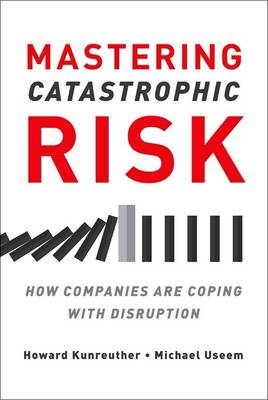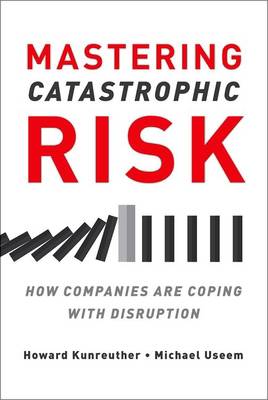
Je cadeautjes zeker op tijd in huis hebben voor de feestdagen? Kom langs in onze winkels en vind het perfecte geschenk!
- Afhalen na 1 uur in een winkel met voorraad
- Gratis thuislevering in België vanaf € 30
- Ruim aanbod met 7 miljoen producten
Je cadeautjes zeker op tijd in huis hebben voor de feestdagen? Kom langs in onze winkels en vind het perfecte geschenk!
- Afhalen na 1 uur in een winkel met voorraad
- Gratis thuislevering in België vanaf € 30
- Ruim aanbod met 7 miljoen producten
Zoeken
Mastering Catastrophic Risk
How Companies Are Coping with Disruption
Howard Kunreuther, Michael Useem
Hardcover | Engels
€ 48,95
+ 97 punten
Uitvoering
Omschrijving
A profound and insightful look at how company leaders prepare for and respond to shocks and crises that threaten their business. Successful firms strategically manage and are more accurate in their assessment of large-scale risks. Doing so is increasingly challenging given the pace of change, whether financial, technological, regulatory, or environmental. Mastering Catastrophic Risk provides real-world practical insights into how large companies are responding to this new reality and develops a framework for smarter thinking about events that can damage a business. As leading authorities on risk management, strategy, and company leadership, Howard Kunreuther and Michael Useem take us on a groundbreaking tour of firms' decision making process. They demonstrate how improving readiness for and resilience against future shocks is now an integral part of company strategy. Using the "DISRUPT" model they have developed, they highlight the seven primary Drivers of disruption: Interdependencies increase exposure; Short-term focus results in limited vision; Regulations require change and constrain opportunities; Urbanization increases the costs of disasters; Probabilities of disasters have increased; and Transparency has enhanced public awareness of problems and impacts on firms' reputations. This updated paperback edition includes a new preface to address threats to business that have emerged or intensified in the past two years including existential threats like the coronavirus, self-inflicted calamities like the Wells Fargo customer account scandal, and natural disasters like the West Coast wildfires and hurricanes on the Atlantic. Some disruptions can be anticipated, while others arrive without warning. Their onset stresses decision makers, impairs company operations, and may even put the enterprise at risk. The bottom-line: business leaders and their governing boards face ever more challenging disruptions and must be ever more on guard. If your company is hit tomorrow, will it bounce back, or drown?
Specificaties
Betrokkenen
- Auteur(s):
- Uitgeverij:
Inhoud
- Aantal bladzijden:
- 250
- Taal:
- Engels
Eigenschappen
- Productcode (EAN):
- 9780190499402
- Verschijningsdatum:
- 1/06/2018
- Uitvoering:
- Hardcover
- Formaat:
- Genaaid
- Afmetingen:
- 163 mm x 239 mm
- Gewicht:
- 453 g

Alleen bij Standaard Boekhandel
+ 97 punten op je klantenkaart van Standaard Boekhandel
Beoordelingen
We publiceren alleen reviews die voldoen aan de voorwaarden voor reviews. Bekijk onze voorwaarden voor reviews.









